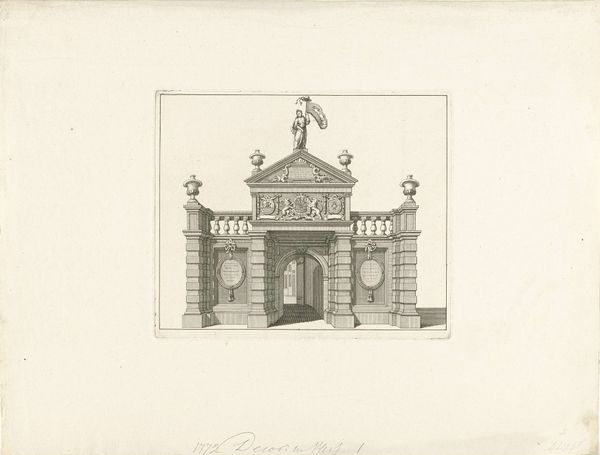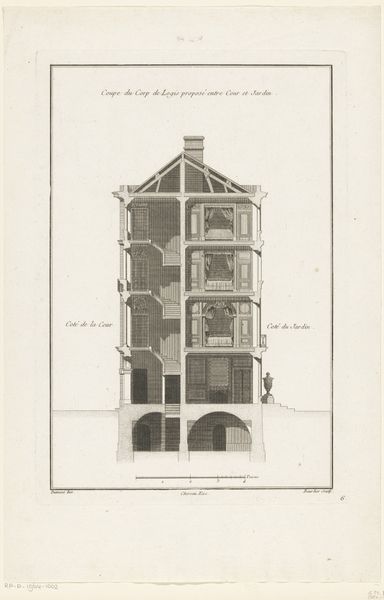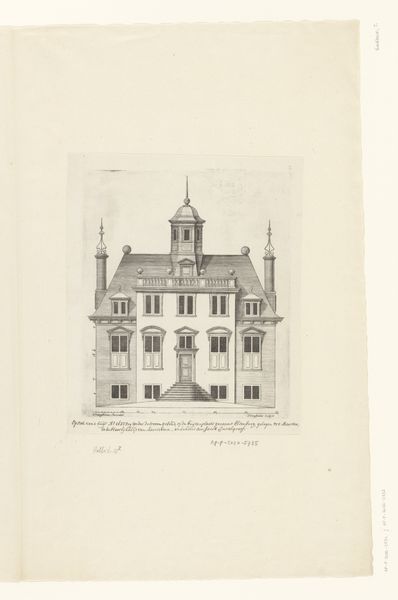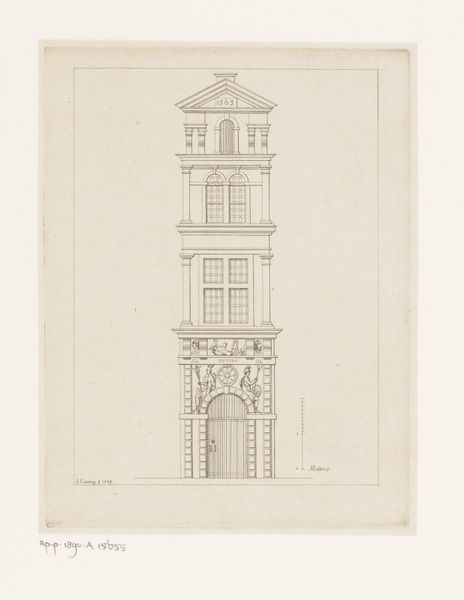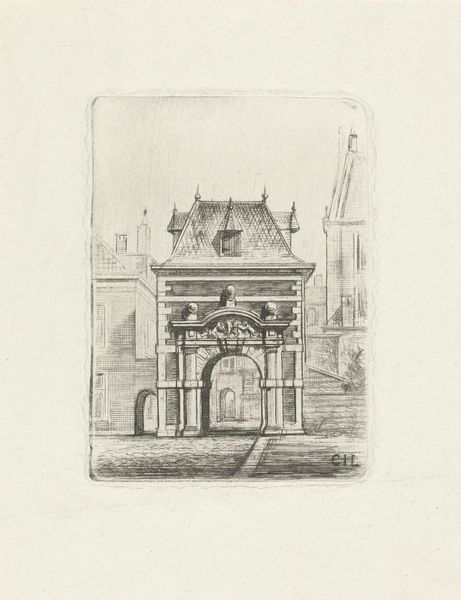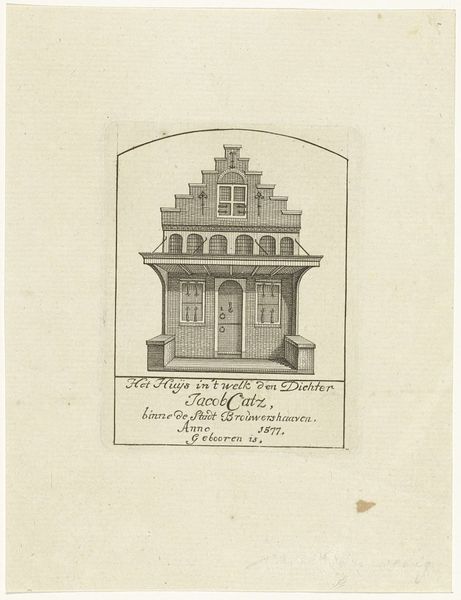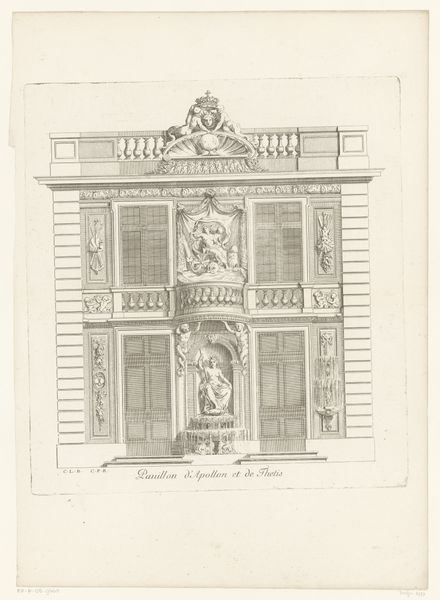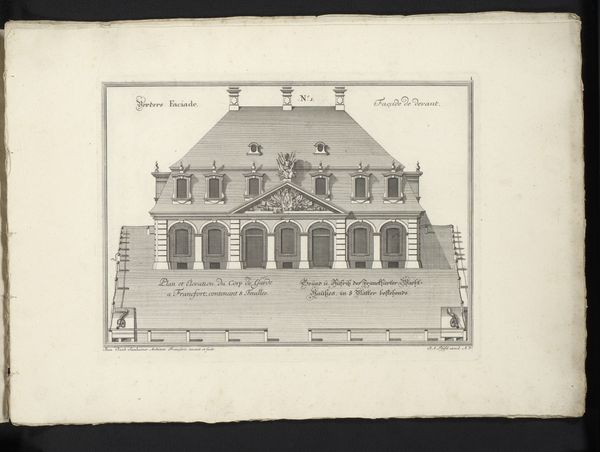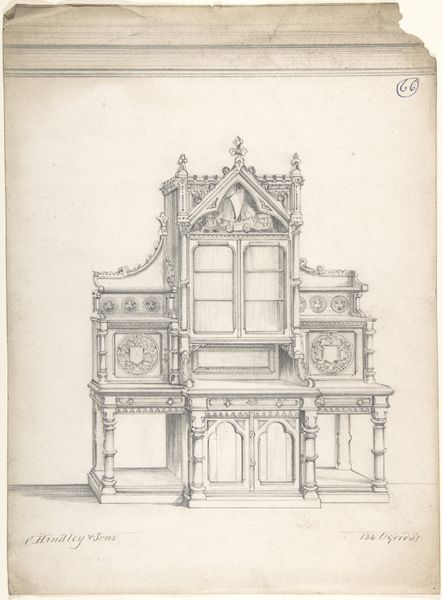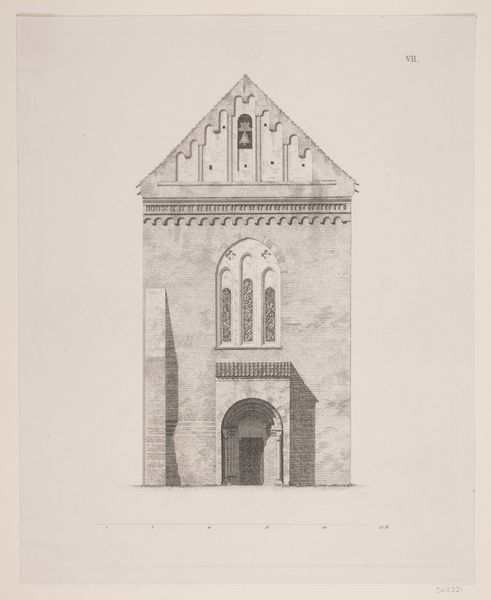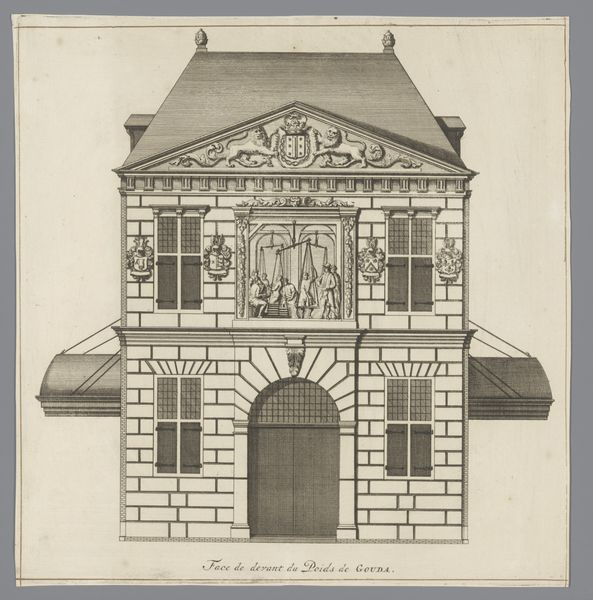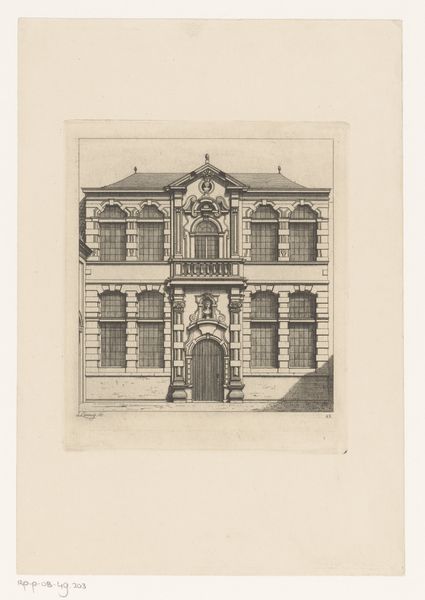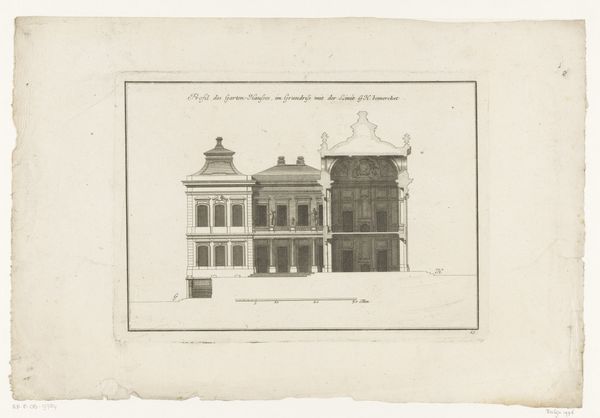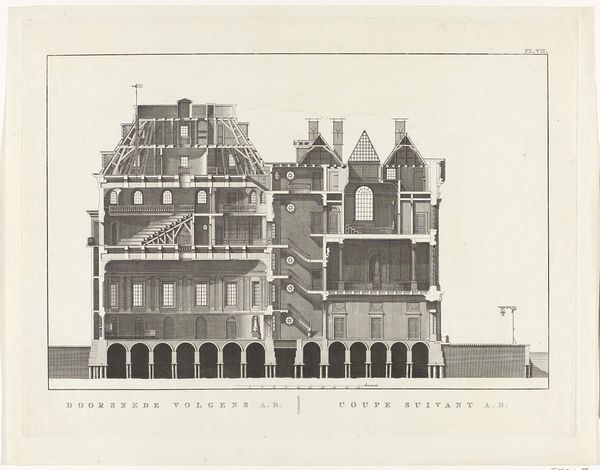
drawing, paper, pencil, engraving, architecture
#
drawing
#
neoclacissism
#
classical-realism
#
paper
#
form
#
geometric
#
pencil
#
line
#
cityscape
#
engraving
#
architecture
#
realism
Dimensions: height 175 mm, width 210 mm
Copyright: Rijks Museum: Open Domain
Caspar Jacobsz. Philips created this etching of the decorated Exchange in Vlissingen in 1772. The Dutch Republic in the 18th century was a society where economic power and civic pride were closely linked. This image encapsulates the intricate relationship between commerce, community, and identity. Exchanges were not just places of trade, they were also symbols of civic identity and economic prowess. Philips, as an artist, was deeply embedded in the cultural fabric of his time. He captured the architecture, but also the values of a society that saw prosperity as a collective achievement. The decoration of the Exchange reflects a desire to visually communicate the town's wealth and status. Think about the emotional impact of this decorated building on the people of Vlissingen. It would have been a source of pride, a statement of their place in the world. The etching is not just a representation of a building, it’s a window into the soul of a community.
Comments
No comments
Be the first to comment and join the conversation on the ultimate creative platform.
